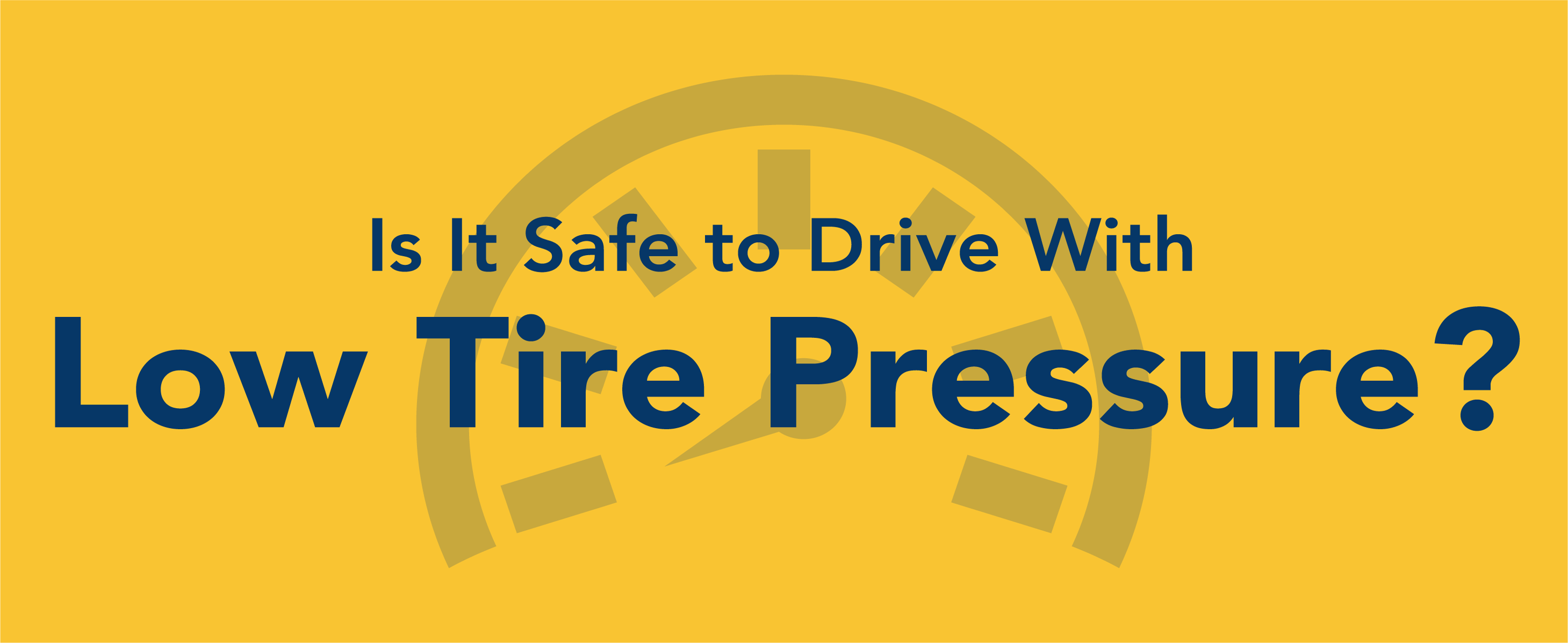Is it Safe to Drive with Low Tire Pressure?

Have you ever been driving and noticed that yellow horseshoe with an exclamation point lit up on your car’s dashboard? This symbol is your Tire Pressure Monitoring System (TPMS) alerting you to potentially under-inflated tires.
A national study conducted by Schrader International found that only “58 percent of drivers could properly identify the lifesaving TPMS warning symbol.” This is concerning because roughly 11,000 tire-related crashes occur annually. Understanding this symbol and how to handle low tire pressure is crucial for your safety on the road.
What Happens If You Drive on Low Tire Pressure?
Driving with low tire pressure can have a number of negative consequences, impacting safety as well as vehicle performance and fuel efficiency. Here’s what happens when you drive on under-inflated tires:
- Increased Risk of Blowouts: This is the most serious concern. Under-inflated tires generate excessive heat due to increased flexing in the sidewalls. This heat buildup can lead to a sudden tire blowout, potentially causing you to lose control of your vehicle at high speeds.
- Reduced Handling and Braking Performance: Low tire pressure alters the tire’s contact patch with the road, reducing grip and traction. This makes steering and braking sluggish, especially in critical situations like emergency maneuvers. Stopping distances are also negatively affected.
- Uneven Tire Wear: When a tire is under-inflated, it bulges more than intended. This puts extra stress on the outer and inner shoulders of the tread, leading to uneven wear and a shorter lifespan for your tires.
- Decreased Fuel Economy: Low tire pressure creates more rolling resistance, forcing your engine to work harder to maintain speed. This translates to lower fuel efficiency and higher gas costs.
What to Do When Your Low Tire Pressure Light Comes On
Don’t ignore the low tire pressure light. When you can safely check the air pressure in all of your tires, do so. Even if you are in a newer vehicle that indicates which tire is low, it pays to check all of the tires and adjust air pressure accordingly. Weather can also play a role in tire pressure. Colder weather can cause tire pressure to slightly drop, so continue to periodically check tire pressure levels in all of your tires when completing your maintenance checklist.
If tire pressure continues to drop even after filling your tire with air, you could have a hole causing air to escape. Make an appointment with an auto repair shop to have your tires evaluated. Best case scenario is your tire can be patched to fill the hole or you may need new tires.
Don’t Rely Solely on Tire Pressure Monitoring Systems
Systems that monitor tire pressure are in vehicles to warn operators of air leaks, but you shouldn’t rely heavily on them. As a responsible driver you should be inspecting your vehicle periodically for maintenance issues. Doing your own inspections allows you to catch and correct issues before they become big safety hazards. Ensure your vehicle is receiving the necessary maintenance. When you have your oil changed at a garage they should also check your tires for wear and provide balancing. Don’t be afraid to ask questions when it comes to the work being done on your vehicle.
Interested in Learning More from Top Driver?
If you’re looking for more ways to stay safe on the road, click here to check out our full list of safe driving tips.
At Top Driver, we’re passionate about road safety. That’s why we offer a range of driver education courses, from teen classes to refresher programs for adults. Our mission is to provide the community with quality training and resources, fostering confidence for a lifetime of safe and intelligent driving.